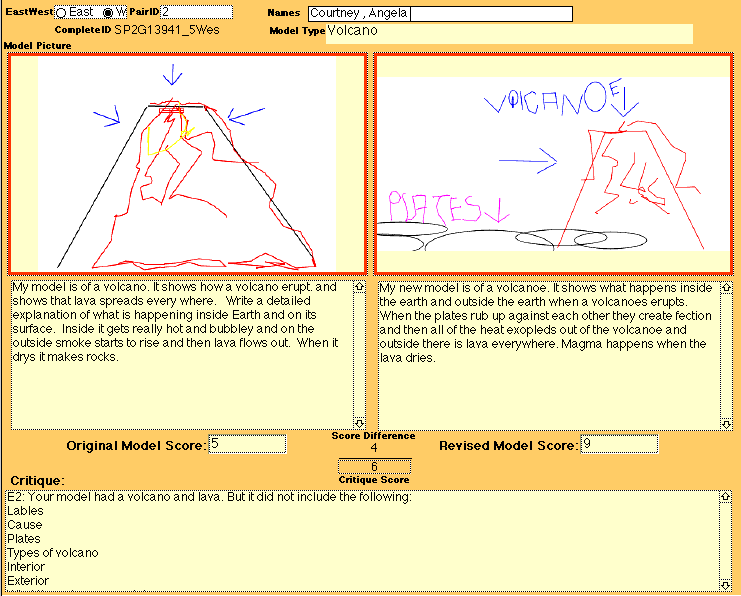Research Results | Volcano 1 | Volcano 2 | Mountain 1 | Mountain 2 | Pre-Post Responses
Volcano Model 1
Examples of Models, Explanations, Learning Partners' Critiques and Revisions for Volcanic Eruption
In the following examples, the model on the left is the students' original model and explanation. On the bottom under "Critique" is their opposite coast learning partners' critique of the model. On the right are students' revised models and revised explanations.

In this example, the students drew a model of volcanic eruption which includes only the crustal layer of the earth; that is, the inside layers of the earth are not depicted, nor are there any internal causal mechanisms responsible for volcanic eruption included in either the model or explanation. This type a model is called a "local" model and is consistent with previous research in this domain which showed that many students of this age group have models of plate tectonic phenomena which only include processes on the surface of the earth, i.e., they do not include the processes and mechanisms inside the earth (Gobert, 2000). The correct conceptions that are represented in the model and/or explanation are: hot magma, movement of magma beyond the volcanic cone, and magma forming new rock. The learning partners' critique is very detailed in that it suggests that the students' model needs "labels, cause, plates, types of volcano, interior, exterior, and what the volcano was doing". The students' revised model includes some the learning partners' suggestions. The revised model, includes plates and labels and the students have elaborated on one type of volcano as requested by their learning partners. More specifically, their explanation it appears the students were trying to depict/describe volcanism due to plate convergence . The students have also included plate movement and plate friction as causal mechanisms responsible for volcanic eruption. Although the revised model only includes a few additional causal mechanisms from the original, it is a significant advance over their original model.

